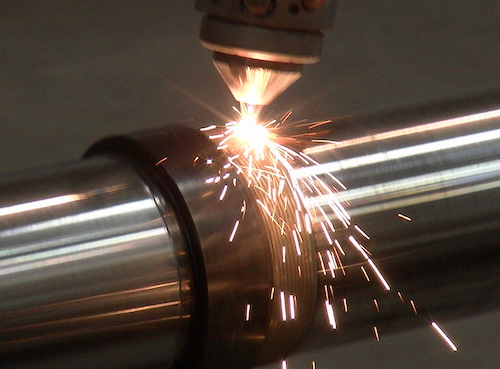Office
# C 91,2nd B Main, 2nd stage,Peenya Industrial Area,Bangalore-560 058.
Bangalore , karnataka
India (560058)

Contact : +919980224378
High-Velocity Oxygen Fuel (HVOF) spray coating is a sophisticated thermal spray technology used to apply protective and functional coatings to various substrates. This method stands out for its ability to produce dense, high-quality coatings with superior hardness, adhesion, and wear resistance. HVOF spray coating services cater to industries requiring enhanced durability and performance from their components and equipment, such as aerospace, automotive, energy, and manufacturing sectors.
The HVOF process involves the combustion of a fuel gas and oxygen in a specially designed gun, creating a high-speed, high-temperature gas stream. This stream is directed towards the substrate, where powdered coating material is injected and accelerated. The high velocity of the particles upon impact ensures that they adhere firmly to the substrate, forming a dense and robust coating.
Key Steps in the HVOF Process:
Preparation: The substrate surface is thoroughly cleaned and prepped to remove any contaminants or oxidation, ensuring optimal coating adhesion. This may involve abrasive blasting or other surface preparation techniques.
Heating and Acceleration: In the HVOF gun, a mixture of fuel gas (such as hydrogen or propane) and oxygen is ignited. The resulting high-velocity flame accelerates the coating powder particles.
Coating Application: The accelerated particles are projected towards the substrate, where they impact and flatten, forming a strong bond with the surface. Multiple layers may be applied to achieve the desired thickness and coating properties.
Cooling and Finishing: After application, the coating is allowed to cool and solidify. Post-coating processes, such as grinding or polishing, may be performed to meet specific dimensional or surface finish requirements.
1. Superior Coating Quality: HVOF coatings are known for their excellent hardness and wear resistance. The high velocity and temperature of the process result in a dense coating structure with minimal porosity.
2. Enhanced Durability: The coatings provide outstanding protection against corrosion, erosion, and abrasion. This durability makes HVOF coatings ideal for components exposed to harsh environments or high-stress conditions.
3. Excellent Adhesion: The high-impact velocity ensures strong adhesion between the coating and substrate, reducing the likelihood of delamination or peeling.
4. Versatility: HVOF coatings can be applied to a wide range of materials, including metals, ceramics, and composites. This versatility makes it suitable for diverse applications and industries.
5. Precision and Control: The process allows for precise control over coating thickness and composition, enabling customization for specific performance requirements.
1. Aerospace Industry: In aerospace, HVOF coatings are used to protect critical components such as turbine blades, landing gear, and engine parts from extreme temperatures, oxidation, and wear. The ability to maintain performance under high-stress conditions is crucial for safety and efficiency.
2. Automotive Sector: Automotive components, including pistons, crankshafts, and cylinder heads, benefit from HVOF coatings to enhance their longevity and performance. The coatings help reduce friction, improve fuel efficiency, and extend component life.
3. Energy Sector: In energy production, especially in oil and gas exploration, HVOF coatings protect equipment exposed to corrosive environments and high temperatures. Components such as pumps, valves, and drilling tools are coated to ensure reliable operation and minimize maintenance costs.
4. Manufacturing and Heavy Industry: HVOF coatings are applied to machinery parts, tools, and equipment to enhance their resistance to wear and extend service life. This includes components like conveyor belts, rollers, and cutting tools.